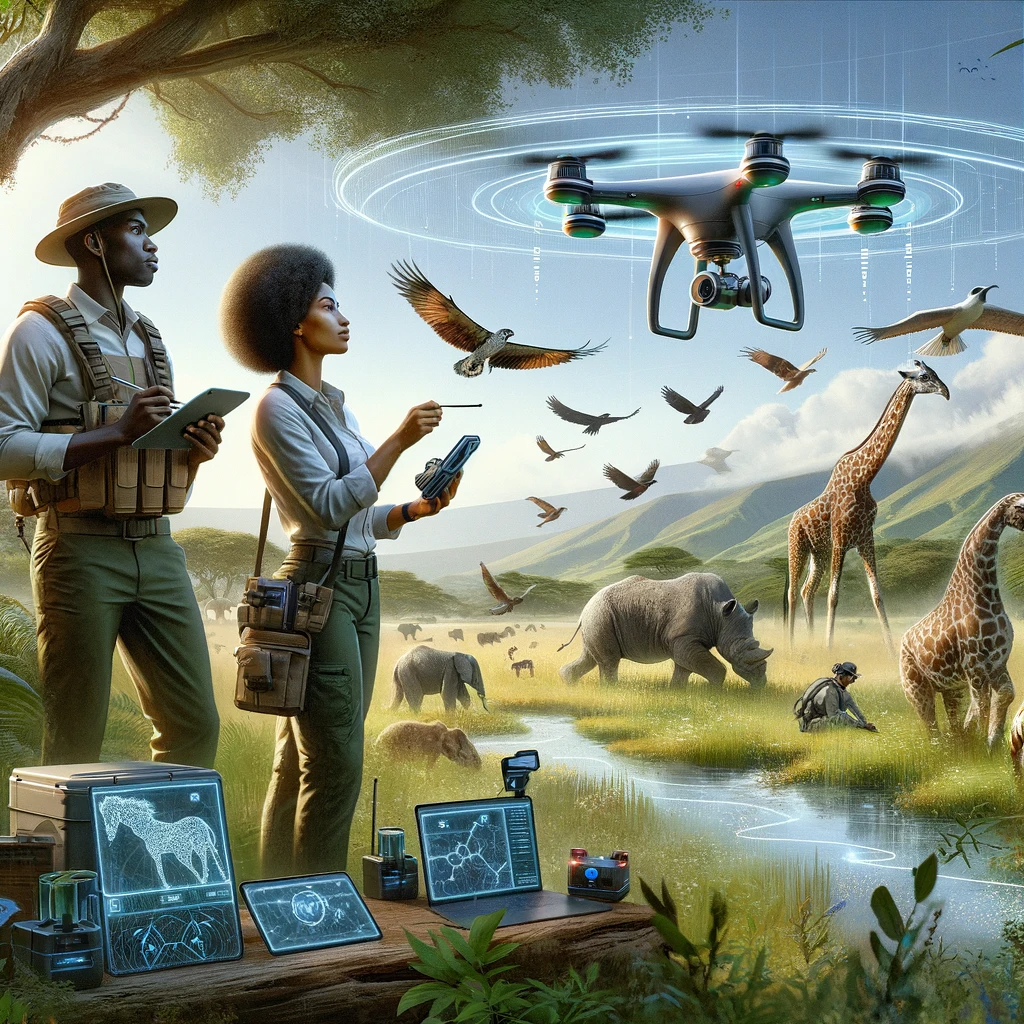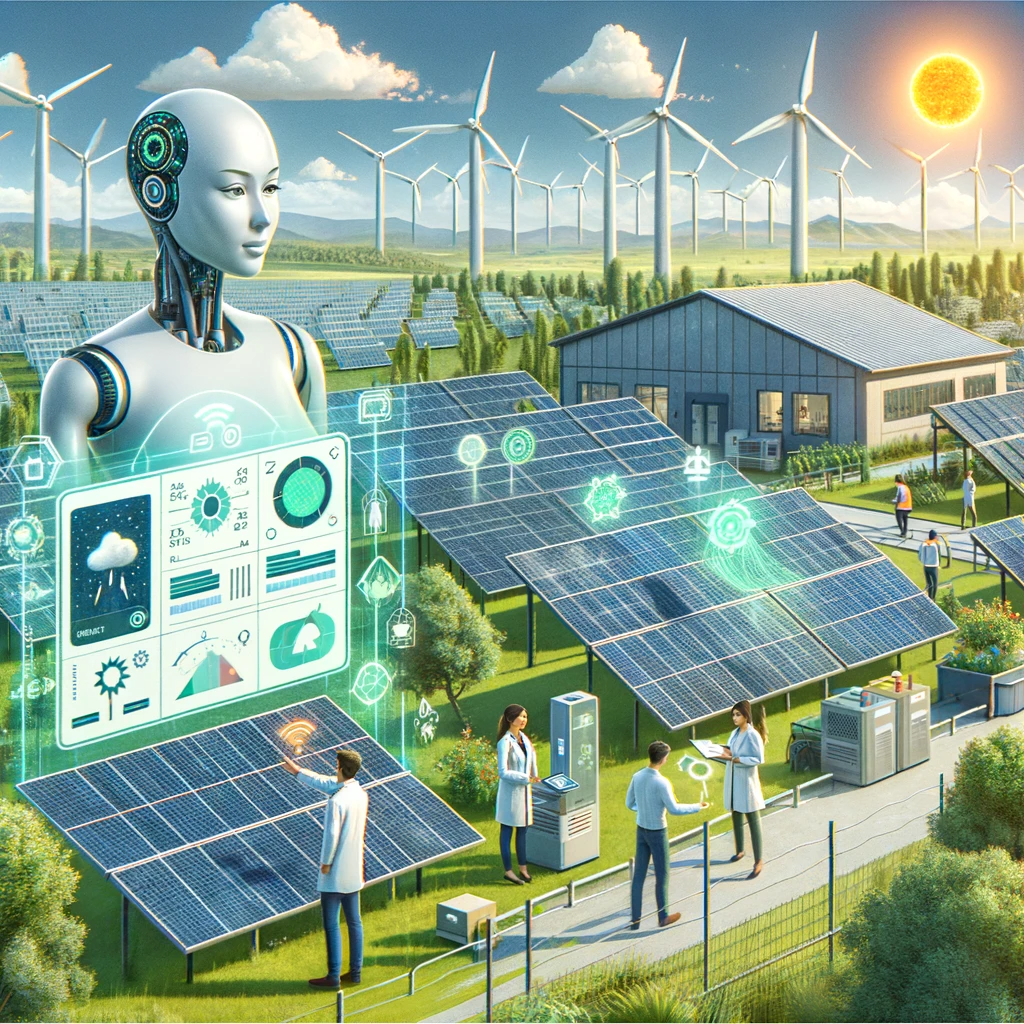Artificial Intelligence (AI) has rapidly emerged as a transformative force across a multitude of sectors, reshaping how we approach everything from healthcare and finance to transportation and education. Its profound capability to analyze vast datasets, predict outcomes, and automate complex processes positions AI at the forefront of technological advancement. However, as the world grapples with the urgent challenges of environmental sustainability and climate change, the role of AI in these critical issues comes under scrutiny.
The potential of AI to either mitigate or exacerbate environmental problems is a topic of increasing importance. On one hand, AI offers innovative solutions for energy efficiency, resource management, and environmental monitoring. On the other, the significant energy requirements of AI systems and their potential to contribute to increased consumption and waste raise concerns.
This article aims to delve into the complex relationship between AI and environmental sustainability. We will explore how AI is being utilized in efforts to combat climate change, examine the environmental impact of AI technologies themselves, and discuss the balance that must be struck between technological advancement and ecological preservation. The central question we seek to answer is: Does AI contribute to or hinder environmental sustainability efforts? Through this exploration, we aim to shed light on AI’s dual role as both a potential ally and adversary in the quest for a sustainable future.

AI and Environmental Sustainability: An Overview
Artificial Intelligence (AI) is increasingly being recognized as a significant player in the field of environmental sustainability. Its applications in this realm are diverse, ranging from monitoring ecological systems and analyzing climate data to optimizing energy consumption and managing natural resources. The potential of AI to contribute to environmental efforts lies in its ability to process and interpret large datasets, predict environmental trends, and propose efficient, data-driven solutions to complex ecological problems.
However, the use of AI in environmental sustainability is not without debate. While AI offers innovative tools for conservation and environmental management, concerns arise about its own environmental footprint. This paradox forms a central part of the discussion around AI’s role in sustainability, weighing its benefits in conservation and resource management against the environmental costs of AI development and operation. This section will provide a balanced overview of AI’s current applications in environmental sustainability, exploring both its potential benefits and the ongoing debates about its ecological impact.
AI as a Tool for Environmental Protection
AI has shown great promise as a tool for enhancing environmental sustainability. In the realm of energy efficiency, AI algorithms are used to optimize power grid operations, reduce energy consumption in buildings, and improve the efficiency of renewable energy systems. In pollution control, AI aids in monitoring air and water quality, identifying pollution sources, and predicting pollution levels, allowing for timely and targeted interventions.
In sustainable resource management, AI assists in predictive analysis for agriculture, forest management, and wildlife conservation, helping to balance human needs with ecological preservation. Case studies exemplifying AI’s positive impact include AI-driven platforms for monitoring deforestation, algorithms predicting the spread of wildfires, and AI systems optimizing water usage in agriculture.
These examples demonstrate AI’s potential to support various aspects of environmental sustainability, contributing significantly to conservation efforts and efficient resource utilization.
The Environmental Cost of AI
Despite its benefits, AI’s environmental cost cannot be overlooked. The carbon footprint associated with training large AI models is a growing concern. These models often require extensive computational resources and energy, leading to significant greenhouse gas emissions. The environmental cost of maintaining AI infrastructures, including data centers and network systems, also contributes to AI’s ecological footprint.
As the use of AI technologies increases, so does the potential for environmental degradation. The manufacturing, operation, and disposal of AI hardware, coupled with the energy-intensive nature of large-scale AI computations, raise questions about the overall environmental impact of AI advancements. This section will delve into the complex relationship between AI’s growth and environmental sustainability, examining the ways in which AI’s increasing adoption might inadvertently contribute to ecological challenges.

Balancing AI Advancements with Environmental Concerns
Balancing the rapid advancements in AI with environmental sustainability is a multifaceted challenge. On one side, AI holds the potential to drive significant improvements in sustainability efforts; on the other, its own environmental footprint cannot be ignored. One of the main challenges is developing AI technologies that are both efficient and environmentally friendly. This involves addressing the energy consumption and carbon emissions associated with AI training and operation.
Strategies to minimize the environmental impact of AI include optimizing algorithms to be more energy-efficient, using renewable energy sources for data centers, and improving hardware efficiency. Additionally, developing AI models that require less data and computational power without compromising their performance could be pivotal.
The role of policy and regulation is crucial in steering AI development towards environmental sustainability. Governments and international bodies can set standards and guidelines that encourage or mandate the use of environmentally friendly practices in AI development and deployment. Such policies could incentivize research in green AI technologies and ensure that the environmental costs of AI are factored into its development and application.
Future Directions and Ethical Considerations
Looking to the future, AI’s trajectory in the context of environmental sustainability is likely to be influenced by both technological advancements and societal demands for greener practices. As global awareness of environmental issues grows, there is an increasing expectation for AI to be part of the solution rather than the problem.
Ethical considerations play a critical role in this context. AI developers and users have a responsibility to consider the environmental impacts of their work. This involves making conscious decisions about data collection and usage, algorithm development, and the overall lifecycle of AI systems.
Emerging AI technologies that could contribute to more sustainable practices include advancements in AI-powered energy systems, waste reduction algorithms, and AI-driven environmental monitoring tools. These technologies have the potential not only to reduce the environmental impact of AI itself but also to enhance global sustainability efforts.

Conclusion
This article has explored the dual role of AI in environmental sustainability, highlighting both its potential to contribute to sustainability efforts and its own environmental impact. The key takeaway is the need for a careful balance between harnessing AI’s capabilities and protecting the environment. This balance requires thoughtful consideration of AI’s energy use, continuous innovation in green AI technologies, and robust policies that promote environmentally sustainable AI practices.
As we look to the future, questions arise about how AI will continue to shape our approach to environmental challenges. Can AI be developed in a way that not only aids sustainability efforts but also sets a new standard for environmental responsibility in technology? How will the interplay between AI and environmental sustainability evolve, and what role will AI play in our collective efforts to combat climate change? The answers to these questions will shape the future of AI, guiding it towards a path that not only harnesses its potential for good but also respects and protects our planet.
